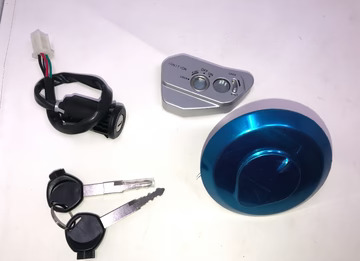Eating well isn’t about strict diets or depriving yourself—it’s about balance. Building a balanced plate ensures you get the nutrients your body needs to stay energized, satisfied, and healthy. Whether you're at home, dining out, or packing lunch, here’s how to create a nutritionally complete plate for every meal.
Protein is essential for building and repairing tissues, and it helps you feel full longer. Each meal should include a good source of lean protein such as:
Chicken breast or turkey
Eggs
Tofu or tempeh
Beans or lentils
Fish or seafood
Greek yogurt or cottage cheese
Aim for about a palm-sized portion at each meal.
Carbohydrates fuel your body and brain, especially when they come from whole food sources. Choose complex carbs that digest slowly and provide lasting energy, such as:
Brown rice or quinoa
Whole wheat pasta or bread
Sweet potatoes
Oats or barley
Legumes and pulses
Stick to roughly a fist-sized serving of these for balance.
Vegetables and fruits are packed with fiber, vitamins, and antioxidants. Try to:
Fill half of your plate with a variety of non-starchy vegetables (spinach, broccoli, carrots, bell peppers).
Add a small serving of fruit on the side or as dessert.
Eat the rainbow—more color typically means more nutrients.
Healthy fats support brain function and hormone production. Incorporate small amounts of these with every meal:
Avocados
Nuts and seeds
Olive oil or flaxseed oil
Fatty fish like salmon
Nut butters
Use fats as a complement—think a drizzle, sprinkle, or spread.
Water is essential for digestion, energy, and overall health. Aim to drink water with every meal. If needed, add lemon or cucumber for flavor without extra calories.
Even healthy foods can contribute to weight gain if portions are too large. Use visual cues:
Protein = palm of your hand
Carbs = fist
Veggies = two open hands
Fats = thumb
This simple guideline helps you stay balanced without measuring every bite.
You don’t have to hit every nutrient perfectly at each meal. Focus on variety across the day. If your lunch is lower in protein, make up for it at dinner. If you skipped vegetables at breakfast, double up later.
Grilled salmon (protein) + quinoa (carb) + steamed broccoli & roasted carrots (vegetables) + avocado slices (healthy fat) + lemon water
Creating a balanced plate is less about perfection and more about consistency. With the right mix of protein, carbs, fats, and plenty of produce, you’ll feel energized, satisfied, and on track toward your health goals—one plate at a time.




Want to add a comment?